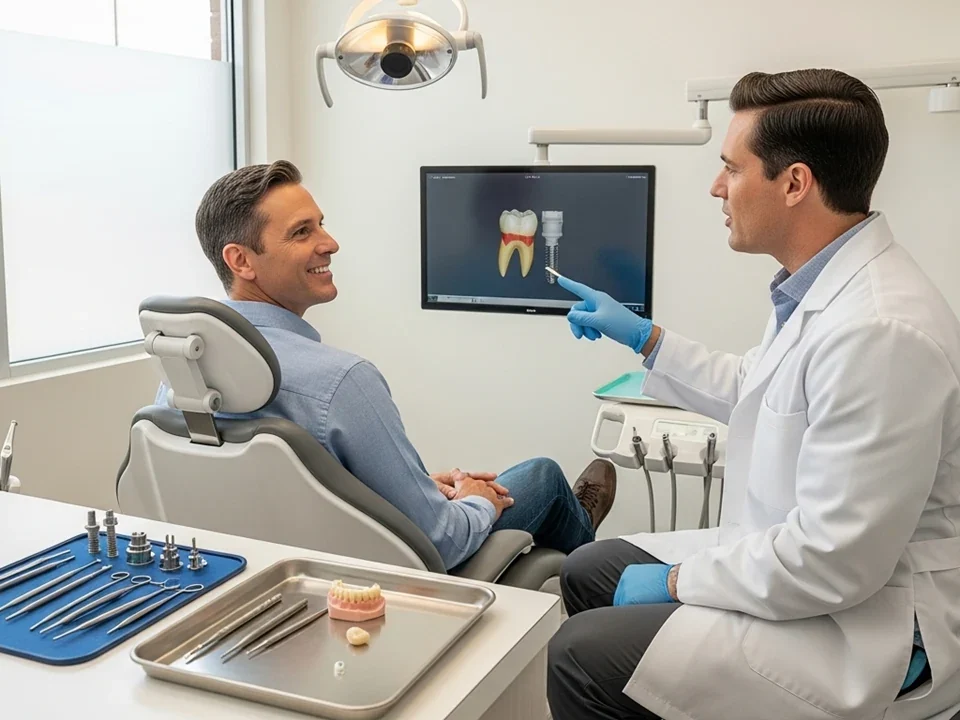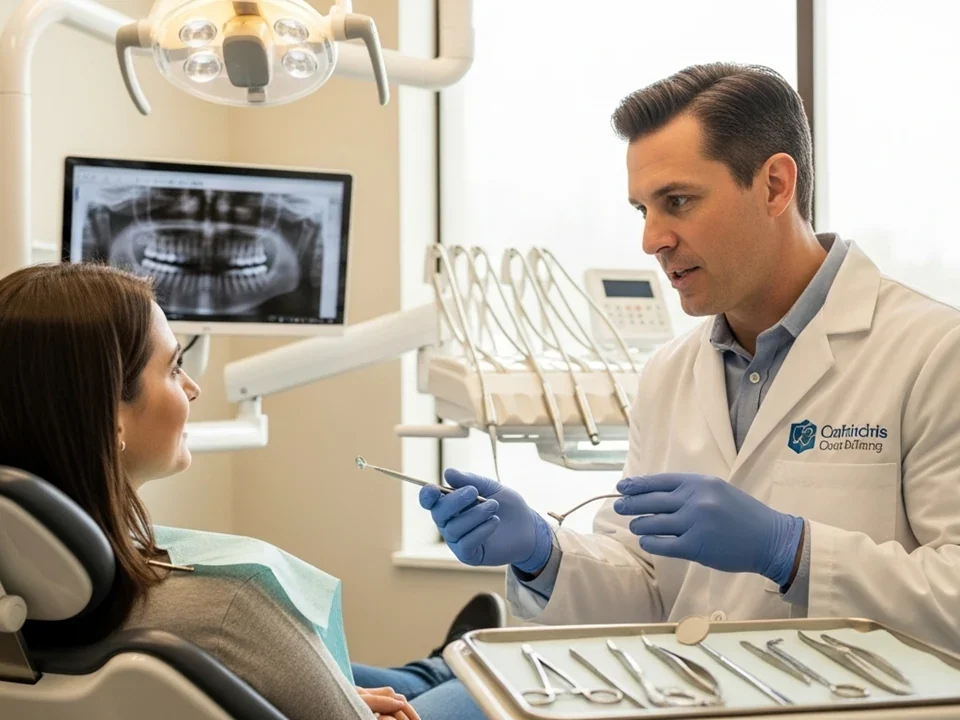
When Can I Drink Coffee After Wisdom Teeth Removal?
August 28, 2025
What You Should Know About Dental X-Ray Frequency
September 4, 2025You leave the dentist’s chair and start to wonder how long do dental fillings last. Fillings protect your teeth after cavities, but they don’t last forever. Some stay in place for years, others wear out sooner. In this article, we explain everything you need to know about how long dental fillings last and what affects their lifespan.
Table of Contents
ToggleWhat Is the Lifespan of a Dental Filling?
The lifespan of a filling depends on what it is made of and how well you take care of your teeth. Most dental fillings last between 5 and 15 years. Some may last longer with proper brushing, flossing, and regular dental checkups. Let’s see how long dental fillings last depending on their type:
Amalgam Fillings
Amalgam fillings can last around 10 to 15 years. They are strong and handle pressure from chewing. Dentists often use them in the back teeth. These fillings look silver or dark gray, so they are not used much in front teeth. Over time, amalgam can expand and may cause small cracks in the tooth if not replaced.
Composite Fillings
Composite fillings usually last about 5 to 10 years. They match the color of natural teeth, so many people prefer them for front or visible teeth. These fillings can wear down faster, especially if you grind your teeth. They can also stain from coffee, tea, or tobacco. Composite does not last as long as metal, but it looks more natural.
Gold Fillings
Gold fillings last between 15 and 30 years. They are very strong and do not wear down easily. Gold does not break or crack under pressure, which makes it a good choice for back teeth. However, gold costs more and stands out in the mouth because of its bright color.
Ceramic Fillings
Ceramic fillings stay in place for about 10 to 20 years. The best dentists in Arizona use them when patients want something strong and tooth-colored. These fillings resist staining better than composite. Ceramic works well in areas where you chew a lot, but it can cost more than other options.
Glass Ionomer Fillings
Glass ionomer fillings last about 3 to 5 years. Dentists use them more in children or in teeth that do not face strong chewing pressure. These fillings release fluoride which helps protect the tooth from future decay. Glass ionomer is not as strong as other materials, so it usually does not last very long.
When Should Fillings Be Replaced?
You should replace a filling when it no longer protects your tooth. Signs you may need to replace a filling:
- The filling feels loose or moves
- You feel pain when chewing
- The tooth feels sensitive to hot, cold, or sweet foods
- You see a crack or gap in the filling
- Food often gets stuck around the filled tooth
- The filling has fallen out completely
Note: If you wait too long, the tooth may get infected or need more serious treatment. Regular checkups help your dentist find problems early.
Can My Diet Affect How Long Fillings Last?
The foods and drinks you choose can affect how long dental fillings last. Some things wear down fillings faster and make them easier to break.
Avoid these foods and drinks:
- Candy (especially sticky or hard)
- Soda and carbonated drinks
- Fruit juices with high acid
- Citrus fruits (like oranges, lemons, limes)
- Vinegar-based foods (like pickles)
- Sports and energy drinks
- Ice (chewing it can crack fillings)
- Nuts (especially hard or roasted ones)
- Popcorn (kernels can damage fillings)
Have these foods and drinks:
- Water (plain, not flavored or carbonated)
- Milk or unsweetened dairy products
- Crunchy vegetables (like carrots, celery, cucumbers)
- Leafy greens (spinach, kale, lettuce)
- Fresh fruits with low acid (like bananas, melons, apples)
- Whole grains (like oatmeal, brown rice, whole wheat bread)
- Lean proteins (chicken, fish, eggs)
- Nuts and seeds in small amounts (chewed carefully)
- Sugar-free gum (stimulates saliva and cleans teeth)
Last Word
Knowing how long dental fillings last gives you a clear idea of what to expect. Each type of filling has a different lifespan, and some last much longer than others. Replacing them at the right time helps avoid bigger problems. Understanding this helps you feel more prepared and informed about your dental health.
FAQs
How many fillings are normal at 30?
Most adults have between two and four fillings by the age of 30. This number depends on oral care, diet, and how early cavities were treated.
How do I know if my filling is worn?
You might feel pain when biting, notice sharp edges with your tongue, or see cracks in the filling. A dentist can check during a visit.
Does replacing a filling hurt?
Best dentists in Avondale use local anesthetic to numb the area, so the process does not hurt. Most people feel only slight pressure during the procedure.
Are fillings a permanent fix?
No, fillings do not last forever. They can wear out over time and need to be replaced to protect the tooth.
How many times can a tooth be filled?
A dentist can fill a tooth more than once if enough healthy tooth remains.





